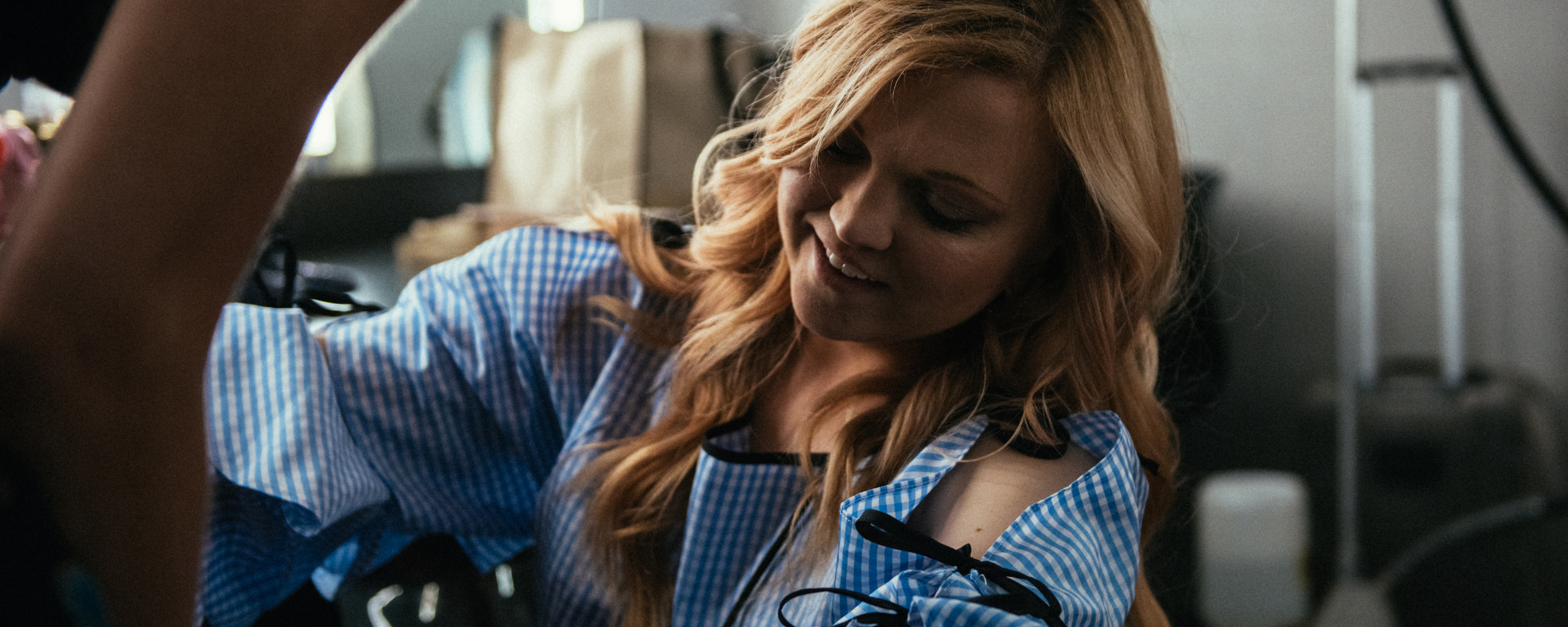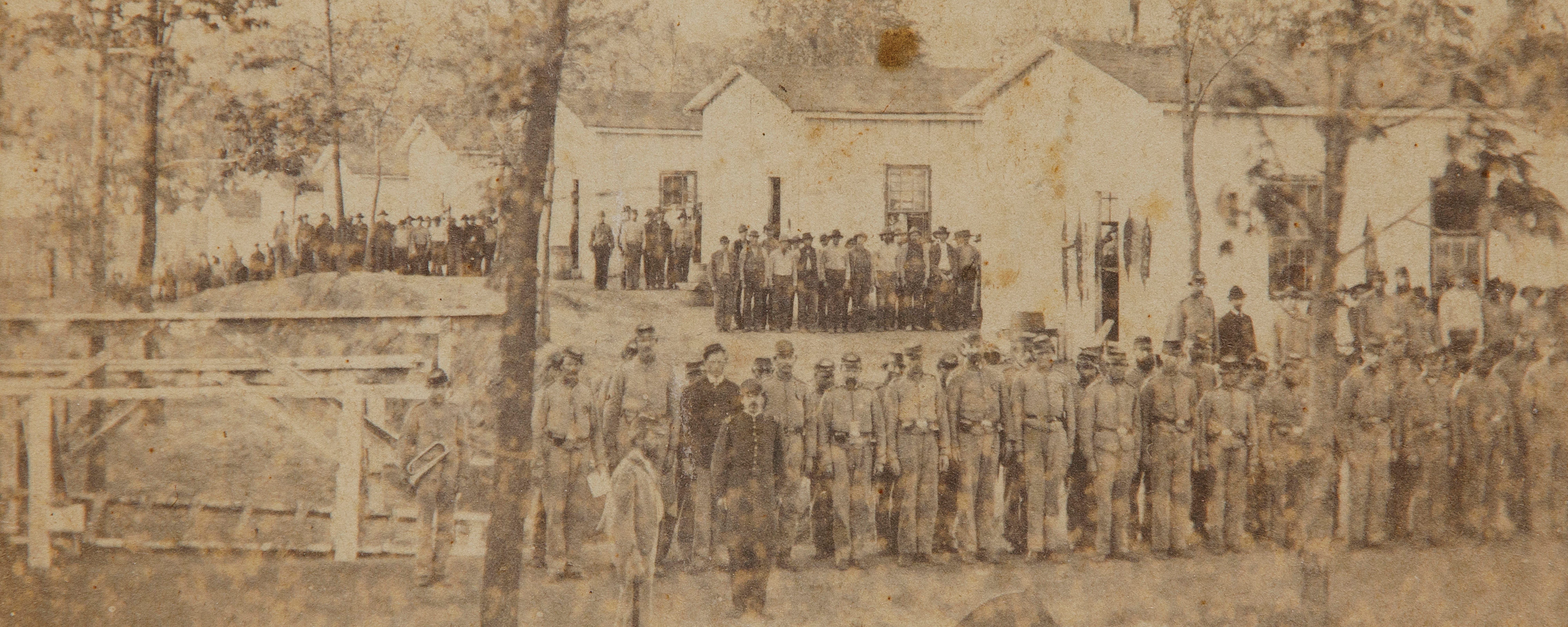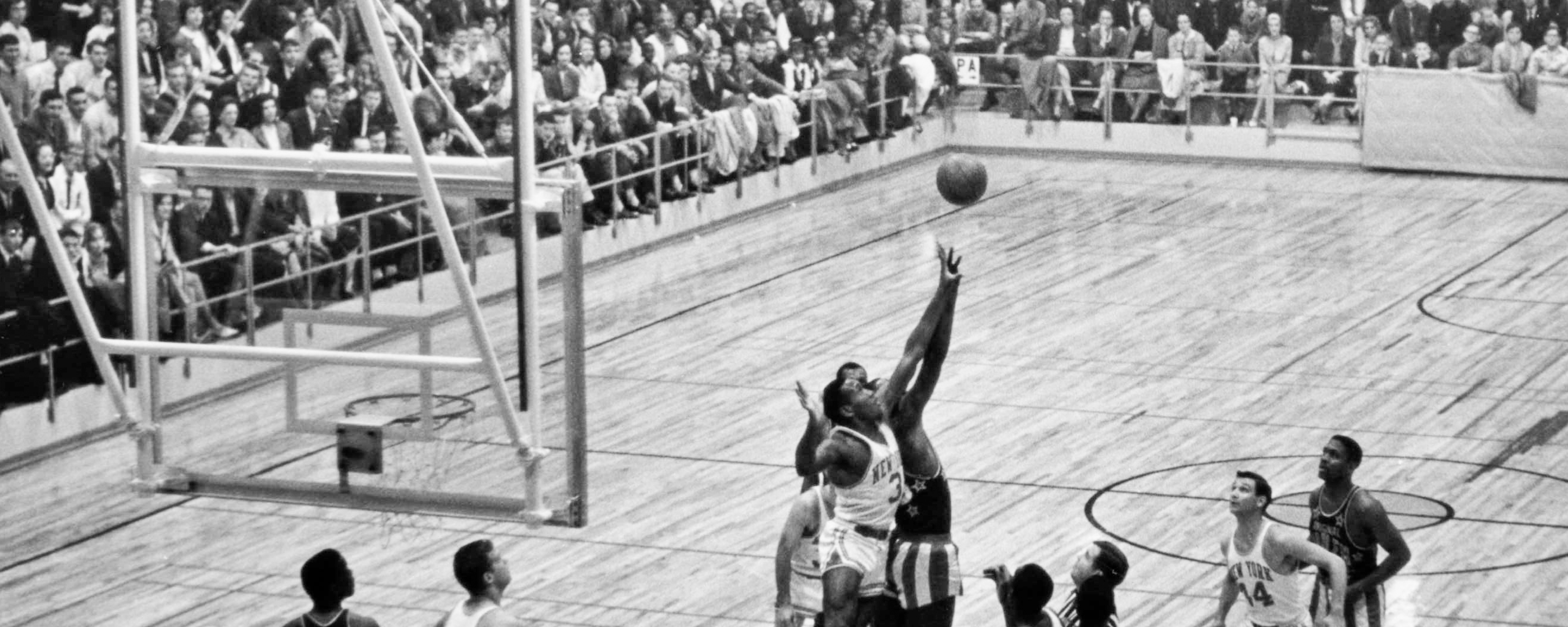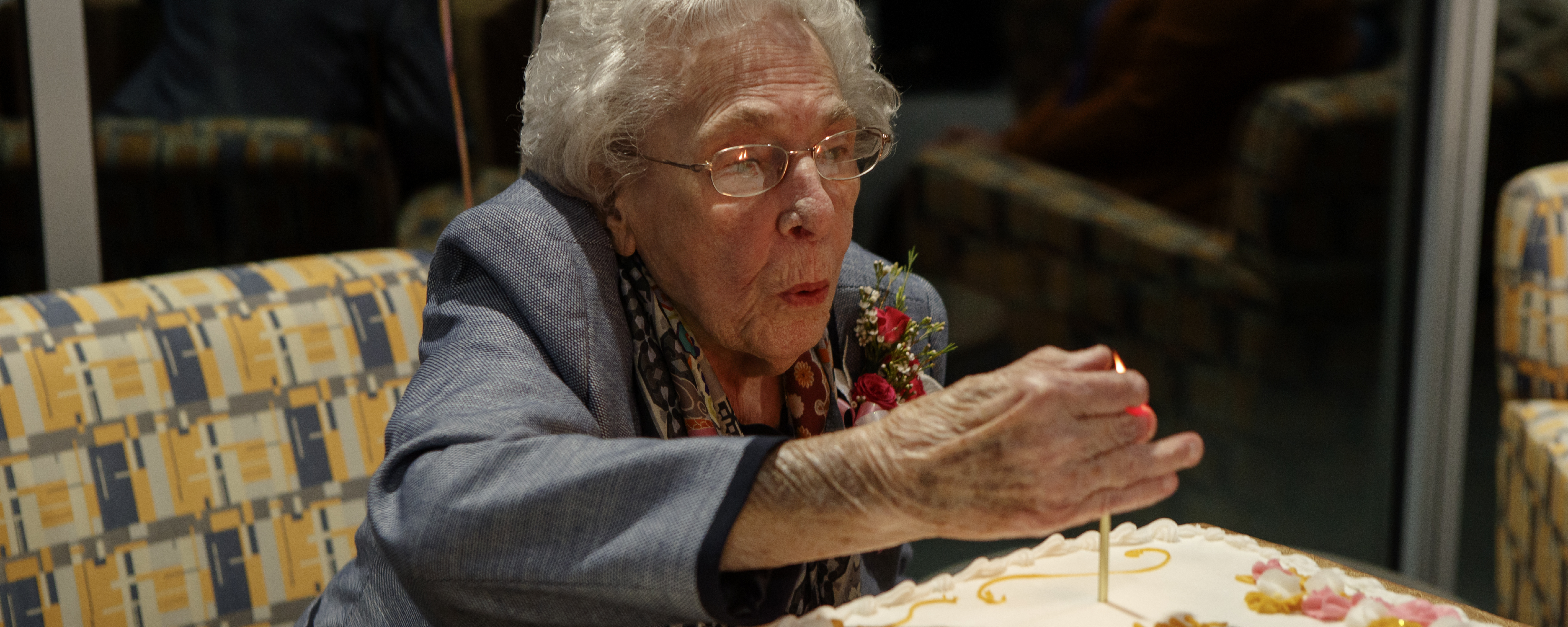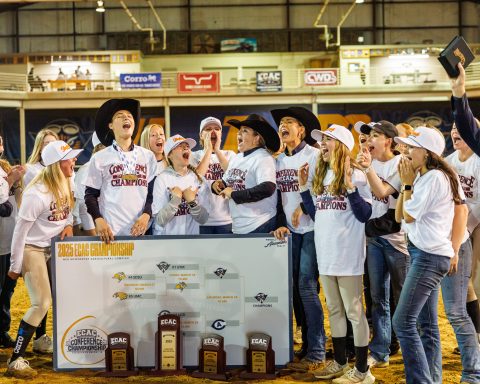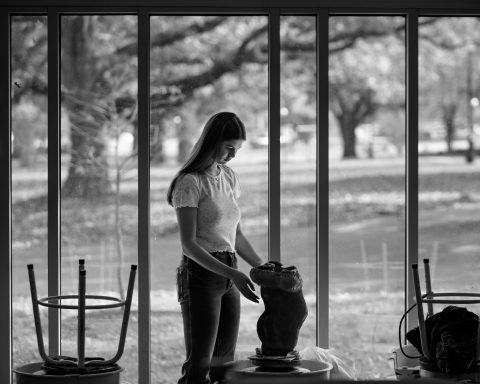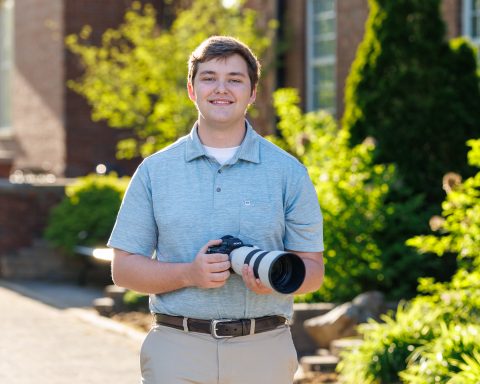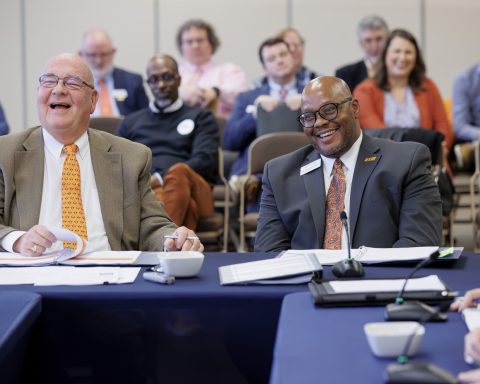Young Alumni in the Entertainment Industry
Story by Erin Chesnut | Photos by Nathan Morgan
Fashion stylist Krista Roser (’06) found her calling during a college trip to New Orleans. Actress Shannon Halters (’02) always knew she wanted to be on the big screen. Cartoonist Charles Brubaker (’12) sold his first cartoon at age 16. All three started at the ground level in their respective entertainment fields and are testaments to how hard work and passion pay off in a world that’s all about who you know and where you’ve been.
Finding a Niche
Roser, of Dyersburg, originally enrolled at UT Martin with an undeclared major and an uncertain aim in life. After a history club trip to New Orleans and a visit to Saks Fifth Avenue, Roser discovered the university’s fashion merchandising program and made a switch. Since then, her career has been about working her way up the ladder, from retail sales to celebrity stylist, and maintaining a network of clients and associates along the way.

“Right after college, I moved to New York City and started a job in merchandising for designers’ corporate offices. The recession hit these types of jobs hard in 2006, but in 2007 I received a job with Men’s Warehouse working toward entering their buying office,” she said.
Four years later, Men’s Warehouse ended their practice of hiring internal candidates to the buying office. Managing locations in the Nashville area at the time, Roser felt trapped in a market where she had never intended to stay. However, not one to wait for life to happen, she started looking for new ways to enter the fashion world.
“I decided to look for new areas in the fashion industry that were still needed and growing at that time, and I started styling on some small jobs through people I met in my stores,” she said. “I then started working as a fashion editor for a digital magazine in the wedding industry based in New York. During this job, I learned about the fashion publicity industry, something I wasn’t knowledgeable about previously.”
Still searching for a home in the busy fashion world, Roser realized country music stars were not using their personal images to make branding statements like their counterparts in New York City and Los Angeles often did. Armed with new professional experience, Roser returned to Nashville and began filling this void with a network of new clients.
“I was able to showcase these relationships (between fashion and professional image) and show how they can build an artist from an image-brand perspective,” she said. “Through people I met in my Men’s Warehouse stores, I was able to book meetings with managers and confirm some clients.”
Today, Roser’s client roster includes names such as Kelsea Ballerini and Florida Georgia Line.

“My clients inspire me – their music, their message, their personalities,” she said. “Every day is different. That’s one of the things I love most about what I do. … You pretty much have to be ready for anything.”
As a fashion stylist, Roser’s responsibilities include preparing clients for interviews, performances and red carpet events and making sure their images match their professional brands from head to toe. She usually attends red carpet events in person to make sure each client can put his or her best foot forward – in the perfect designer shoe, of course.
“I am there to make sure everything looks perfect before each photo, and I’m there for any ‘oops’ occasions. You never, ever want a wardrobe malfunction!” she said. “Most of the time I have more than one client at an event, so I’m making sure everyone is taken care of and getting changed when they are supposed to for performances and such. There is always a lot of running around.”
Roser admits that most of her work is not glitz and glamour, and newcomers to the industry have to be willing to prove their worth.
“It’s a hustle, and it isn’t for everyone. You have to really have a passion for it. There are long hours, a lot of high energy, high stress and very little pay in the beginning,” she said. “You have to be willing to work hard for little to nothing in the beginning and willing to do the work. Interning and assisting already established stylists is a great way to learn about it and grow into your own clients. …
“Start working in the industry as soon as you can. Start with internships; it’s all about your experiences and the relationships you make along the way,” she added.
Making Connections
While Roser is backstage, Shannon Halters, known by the stage name Shannon Ashe, is on set preparing to assume a new personality – often complete with a husband and children she met that morning.
Originally from Mt. Juliet, Ashe began her acting career at the age of 16 with a national commercial for Honda generators. However, she, like Roser, has worked many positions over the years to help build the network needed for success in the entertainment industry. After graduating with a business administration degree and moving to Nashville, Ashe worked in information technology recruiting while filming infomercials and modeling men’s watches on the home shopping network.
Later, she sold medical devices while dancing for the Tennessee Titans and the Nashville Predators for two seasons. It was this unlikely choice that helped Ashe get a foothold in the Nashville entertainment world.

“That was great for helping me get to know people in this business and make connections,” she said. “Even though people don’t realize it, because Nashville is so small, anything entertainment-related helps you get more connected with people and be able to get bigger and better opportunities. I got to do all kinds of things through the Preds and the Titans that really helped me make a lot of connections.”
After moving to Connecticut with her husband, Ashe spent several years in account sales before deciding to dedicate herself to the original dream of acting in New York City.
“I finally realized that I’d been in this place now for three years to be an actress in New York (City), and I haven’t done any of it,” she said. “I started going to New York as soon as I could. I started looking for an agent and knocking on doors, putting myself out there, taking some classes. I finally got an agent and started booking work.”
Ashe booked a commercial for iDevices, a home technology branch of the Apple Corp., which began opening doors to larger jobs.
“(iDevices) really helped launch a lot of commercial work for me, and I got to know a lot of people through that because it was a long shoot over several days. … And then I got calls through people I met there to do other commercials right away,” she said. This network eventually led to recurring appearances on “The Dr. Oz Show” and a one-time role on the hit crime drama “Blue Bloods,” starring Tom Selleck and Donnie Wahlberg.
Ashe has also done national commercials for Home Goods and Friendly’s Restaurants, among other clients, and has a role in the movie “Breakdown,” showing in film festivals this year. As she continues to improve her craft, Ashe says she hopes to book more roles playing characters who are very different from herself.
“I love dark roles. … Being an actress, it lets me tell someone else’s story. I don’t want to tell my story or what other people think is my story,” she said. “My favorite role, so far, (is when) I was a drug-addicted mother. It was fun for me because I get stereotyped a lot. … People want me to be a Stepford housewife or a trophy wife or a socialite because that’s how they see me. So being able to play this woman that was a drug-addicted mother wasn’t about my looks. It was about being a character and showing that story of this little boy who lived with his mother who just couldn’t get her life together. That’s probably my proudest moment. It was a short film; it wasn’t anything huge that a lot of people have seen, but it was me able to showcase that I actually have real talent. I’m not just here to be the person that you think you see in front of you.”

Ashe says those looking to find time on camera need to approach the business for the right reasons and with the knowledge that the largest part of success is trial and error.
“You have to audition, audition, audition, which is money out of your pocket all the time. If you don’t have any connections, like me, and you’re starting from scratch, you need to do your research. You need to know the business. You need to know who you need to get in front of,” she said. “Be persistent, and not just persistent, but you have to know that this is really what you want more than anything. Not just ‘I want to be famous.’ If you go in there and just think, ‘I want to be famous,’ … you’re already in it for the wrong reasons and you’re not going to last. …
“You just have to go in knowing that you have a desire to create something that’s going to move people and show them something. And if you really have that passion to do that, then you’ll stick it out.”
Building Character(s)
Away from the lights of New York City, Charles Brubaker’s work is gaining popularity among cartoon artists. In a world often filled with quick wit, classic puns and stinging one-liners, Brubaker’s current characters keep up the banter with a series of stories from a feline perspective.
The Martin artist is responsible for the “Ask A Cat” and “Fuzzy Princess” comics, often drawing on the antics of his own cats for inspiration. “Ask A Cat” is published online at gocomics.com by the Andrews McMeel Syndicate, home of “Calvin and Hobbes” and “Doonesbury,” and “Fuzzy Princess” is featured in two print comic books available for purchase on Amazon.com.

“A lot of my strips (for ‘Ask A Cat’) are based on my cats’ antics and also on my readers – whatever questions my readers send me,” he said. While “Ask A Cat” is a weekly one-panel comic, “Fuzzy Princess” is a comic series intended for younger readers.
“I was at a comic convention in Baltimore (Maryland), and I met this guy named Frank Cammuso who does kids’ graphic novels called ‘The Misadventures of Salem Hyde.’ I showed him my ‘Ask A Cat’ strips, and he suggested I try doing graphic novels for kids or middle grade,” he said. “I was at the convention, and I noticed that there were a lot of creators doing comics about princesses going on adventures…. So I just jokingly said to myself, ‘I already do comics about cats, why don’t I make a cat princess comic?’” And so the fuzzy princess was born.
Creating a comic strip has more steps than many readers realize, including the drafting of the overall story arc.

“With ‘Fuzzy Princess,’ I draw a really detailed outline … basically paragraphs on what happens and what the character does, maybe with a couple lines of dialogue if I think they should be included in the finished product,” said Brubaker. “Then I start sketching it – very rough sketches with lines and dialogue, which can still be changed when I start the proper drawing, but this gives me something to start with. After that I do the pencils. …
“I do the pencils digitally with a tablet using Clip Studio Paint. I sketch digitally; that way I can edit the roughs easily and change the shapes. … I write the dialogue so I know how big the balloons should be. … Once I’m satisfied with the pencils, I print it out and go to my drawing table where I ink it on separate paper using my fountain pen. Then I scan it back in and add the letters using a font of my handwriting that I made,” he explained. “I’d say the only difference in the process is that I leave ‘Ask A Cat’ as a black-and-white strip, while ‘Fuzzy Princess’ is in color.”
Many modern cartoonists create both sketches and ink drawings digitally, but Brubaker prefers the physical process of inking by hand.

“Honestly, I just like how the line art looks when I ink it on paper. Also, I just really like doing it traditionally. I really like my fountain pen. There’s something very Zen about inking, especially by hand. I actually really enjoy that part, where a lot of artists say that doing the line art is their least favorite part,” he said.
Brubaker, who drew comics for “The Pacer” student newspaper while an undergraduate, has created a professional network of cartoonists from across America by attending conventions and trade shows to showcase his work. The walls of his home studio are covered in original sketches and art from artists like Jim Davis (“Garfield”), Sherm Cohen (“SpongeBob SquarePants”) and others who have appreciated his creations.
In addition to his two primary comic strips, Brubaker is also a storyboard artist for the YouTube cartoon “Pencilmation” and contributes work to the SpongeBob comic series. Growing up in Japan, he drew early inspiration from a mix of classic Japanese manga comics and the “Stars and Stripes” military newspaper available where he lived. He was inspired to draw his own strips after reading his first “Calvin and Hobbes” collection and sold his first professional cartoon panel to The Eagleville Times in Rutherford County at the age of 16.
Moving forward, he hopes to republish the “Fuzzy Princess” books in color and publish a second “Ask A Cat” book in 2019. He also has plans to expand a horror-comedy comic called “Ghost Cat,” which has been a periodic project for the past few years. He advises new cartoonists to get their start in newspaper comics to learn basic composition and format before working up to more complex pieces.
While Roser, Ashe and Brubaker have found homes in different parts of the entertainment industry, their journeys tell similar stories. All three started out small – sometimes working in related fields just outside their intended career areas – and built professional networks that later helped open doors to bigger opportunities. All three continue to climb the ladders of recognition and success in their respective areas, and all three are proud to have gotten their start at UT Martin.

